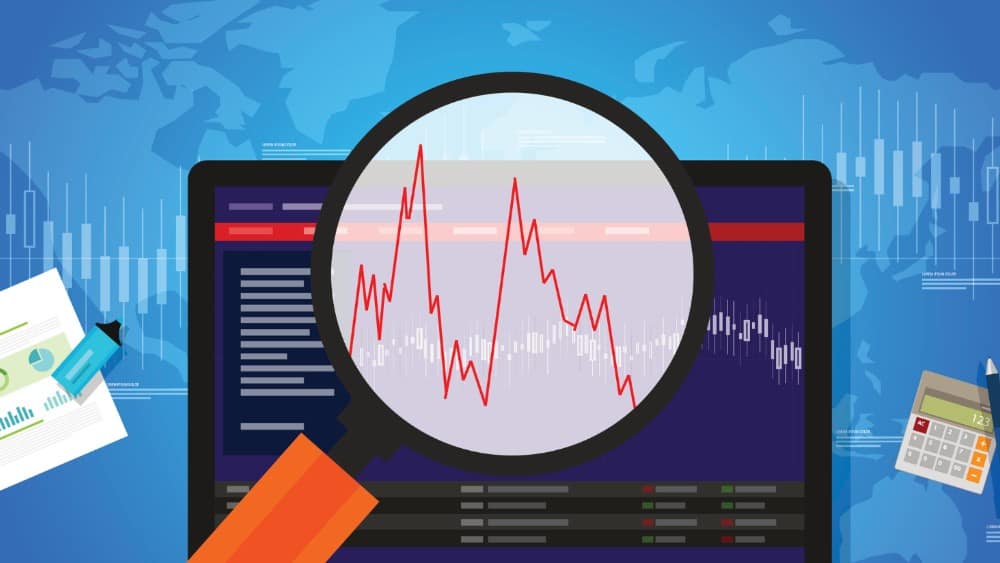The stock market is very volatile amid the uncertainty around the magnitude, duration, and impact of the coronavirus pandemic. Many companies have suspended their earnings guidance and stock buybacks.
Even the most celebrated value investor, Warren Buffett, who is known for buying when the market is fearful, is not buying in the current market. Investors fear that the stock market will crash again.
While the TSX Composite Index recovered after falling 34% in March, it’s still down 10% year to date. The stock market recovered on the back of the Canadian government’s $52 billion stimulus package and $55 billion in tax deferrals.
As the business and economic environment is not driving this stock market rally, it’s not sustainable. There will be a pullback before growth — one that will lead to another stock market crash.
When does a stock market crash?
While there’s no specific definition of a market crash, when the overall stock market falls by the double digits, it’s called a crash. When there is uncertainty in the market, investors become fearful and sell their stocks in a panic, causing the stock market to crash.
The biggest stock market crash in history was during the Great Depression in 1929, and it took the market 25 years to return to pre-crash levels. Over the years, regulators, governments, and central banks learned from every crash and set a system in place to avoid the 1929-level crisis.
In the current COVID-19 turmoil, the Federal Reserve and the government have acted fast and put a stimulus package in place, minimizing the damage to the stock market. But another stock market crash is inevitable as the economy faces the aftermath of the COVID-19 pandemic.
What factors could result in another stock market crash?
The current stock market rally comes as investors are optimistic that things will normalize in the next 12 months. But five events can shatter these hopes.
- The second wave of the pandemic: Countries worldwide is gradually easing the lockdown. This easing could spark a second wave of the pandemic, as there is no vaccine in place yet. A second lockdown could lead to another stock market sell-off, as investors would want to hoard cash to survive the lockdown.
- Stimulus package: The current stock market rally has priced-in stimulus packages like unemployment benefits, and rent and loan deferrals. The government has extended these stimulus packages from June to August, but it can’t continue this support forever. When it removes these packages, businesses and individuals will struggle to pay salaries, rent, mortgages, and loans.
- Increase in defaults: Many companies and individuals have taken loans to pay for their daily expenses. As the government lifts stimulus packages, they may default on their payments. If the magnitude of the defaults is higher than anticipated, banks could face solvency risks more significant than the 2008 crisis. Then the government will have to bail out banks.
- Unemployment: Many companies will go bankrupt and others will cut costs to survive. This could lead to more job cuts. On the individual front, more members of a family will seek jobs to meet their expenses and pay off their debt. All this will mean increased unemployment, negatively impacting the economy.
- Looming recession: All of the above factors will push the economy into recession.
What should you do?
It is difficult to time the second stock market crash, but you can prepare for it. Do not sell your good investments in panic, as the market will recover gradually. Invest in cash-rich stocks that have recurring revenue and are resilient to a downturn.
Enghouse Systems (TSX:ENGH) and Constellation Software (TSX:CSU) are resilient to a market event because of their diversified consumer base and product portfolio. They acquire companies that offer mission-critical software to niche vertical markets. The majority of their revenue is recurring in nature and comes from maintenance service and software subscriptions.
They have low overhead costs, which means their EBITDA margins keep improving with economies of scale. Enghouse and Constellation have $168 million and $216 million in net cash, respectively, giving them sufficient liquidity to withstand the crisis and undertake acquisition opportunities.
If you own these two stocks, don’t sell them in panic, as they have strong growth potential. They are also good buys in a market crash.
Check below the list of other fundamentally strong companies that are good buys in a market crash.
The 10 Best Stocks to Buy This Month
Renowned Canadian investor Iain Butler just named 10 stocks for Canadians to buy TODAY. So if you’re tired of reading about other people getting rich in the stock market, this might be a good day for you.
Because Motley Fool Canada is offering a full 65% off the list price of their top stock-picking service, plus a complete membership fee back guarantee on what you pay for the service. Simply click here to discover how you can take advantage of this.
Click Here to Learn More Today!



































